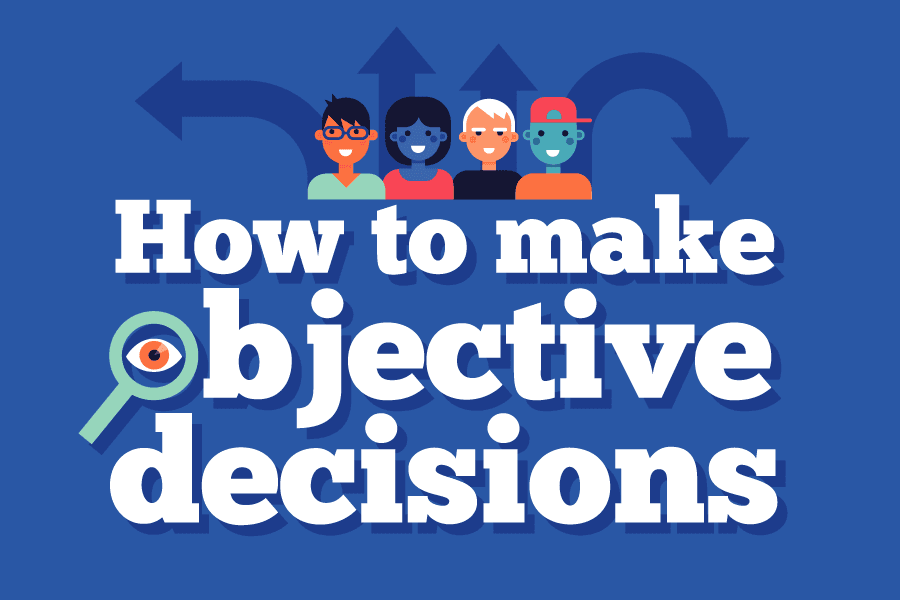Infographic: 9 Ways To Make More Objective Decisions

We make decisions all the time. They range from small decisions like what to wear to work to more significant ones like taking up a job offer overseas.
Whether we realise it or not, how we feel has a big impact on the decisions we make. So, how do we find a level of personal consistency, where we never look back and regret our choices?
Read also:Do You Make Good Decisions?
The key is to develop our powers of objective decision-making. This is, of course, easier said than done. Consistently making non-emotional and rational choices takes practice and self-reflection. However, it will be worth it to harness the power of objective decision-making.
Emotions are not always the enemy but they can influence you to do things you might not otherwise do if you were at your general emotional baseline.
This might interest you:Why You Should Be Rational About The Emotional When Making Decisions
Finding the right structured process to evaluate a decision or just taking some time to allow the intensity of an emotion to subside is a move in the right direction. Learning to do these things regularly can free us from undesirable emotional influence on our behaviour.
The following tips will give you the necessary tools needed to keep your emotions in check while you decide what’s going to happen next.





Infographic first appeared here.
Leadership
References:
1.Hirshleifer, D. and Shumway, T. (2003). Good day sunshine: Stock returns and the weather. The Journal of Finance. 58(3).
2.Gigerenzer, G. (2004). Dread risk, September 11, and fatal traffic accidents. Psychological Science. 15(4).
3.Iyengar, S. S. et al. (2003). How much choice is too much?: Contributions to 401(k) retirement plans. Pension Research Council Working Paper.
4.Nickerson, D. (1998). Confirmation bias: A ubiquitous phenomenon in many guises. Review of General Psychology. 2(2).
5.Hansen, K.E. (2013). The bias blind spot and making objective decisions despite it. dataspace.princeton.edu.
6.Madrian, B.C. and Shea, D.F. (2001). The power of suggestion: Inertia in 401 (k) participation and savings behavior. The Quarterly Journal of Economics. 116.
7.Wilson, T.D. and Gilbert, D.T. (2005). Affective forecasting: Knowing what to want. Current Directions in Psychological Science. 14(3).
8.Gross, J.J. (2002). Emotion regulation: Affective, cognitive, and social consequences. Psychophysiology. 39.
9.Forgas, J.P. et al. (1983). The influence of mood on perceptions of social interactions. Journal of Experimental Social Psychology. 20.
10.Begley, S. (2014). The science of making decisions. newsweek.com.
11.Williams, P.M. (2001). Techniques for root cause analysis. ncbi.nlm.nih.gov
12.Baron, J. and Brown, R.V. (1991). Teaching decision making to adolescents. New York: Routledge.
13.High School Operations Research. (2006). Multi-attribute utility theory (MAUT). hsor.org
This article is published by the editors of Leaderonomics.com with the consent of the guest author.





